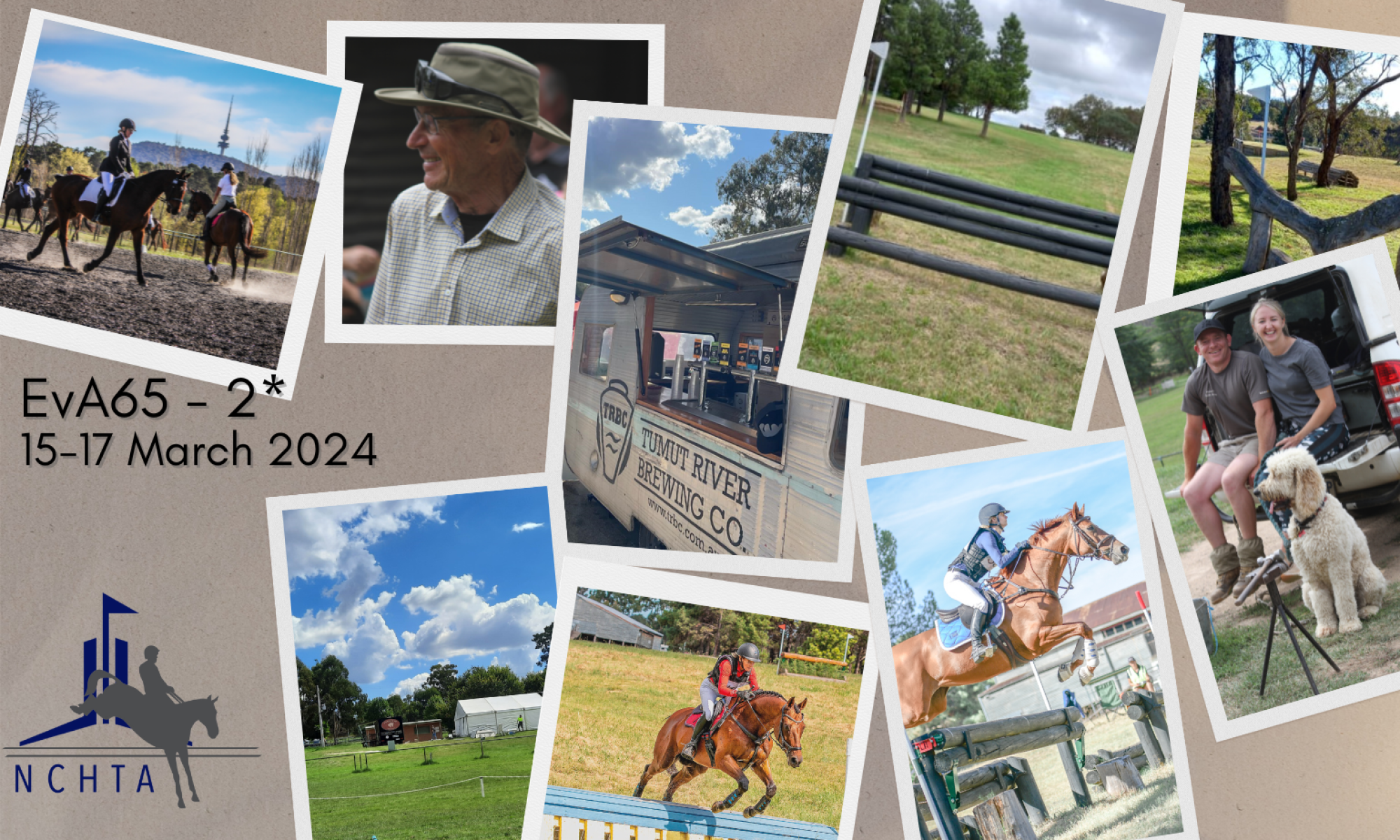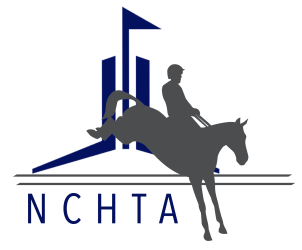Eventing (also known as horse trials) is an Olympic sport which may be more aptly described as an equestrian triathlon. A horse and rider combination compete against other combinations across the three disciplines of dressage, cross country and showjumping. Penalties from each phase are summed to give each combination a final score. The winner is the combination that finishes the competition with the least number of penalty points.
Traditionally the competition was run as a one-day event (ODE), where all three phases are completed in one day (dressage, followed by show jumping and then cross country) or a three-day event (3DE), with dressage on the first day followed by cross country the next day and then show jumping in reverse order on the final day.
Today, there are two types of competition, CCI (international) or CCN (national), either Long format or Short.
Dressage
The dressage phase (held first) consists of an exact sequence of movements ridden in an enclosed arena. This is a test of obedience. A good test is essential for a top placing. Horses perform a series of movements that are marked for accuracy, movement and rhythm. Each movement in the test is scored on a scale from 0 to 10, with a score of “10” being the highest possible mark and with the total maximum score for the test varying depending on the level of competition and the number of movements. The marks are converted to a percentage and from this a penalty score is calculated.
Cross Country
The cross country phase requires both horse and rider to be in excellent physical shape and to be brave and trusting of each other. This phase consists of a course of solid fences such as logs and stone walls, and obstacles like water, ditches, drops, banks and combinations. Speed is also a factor, with the rider required to cross the finish line within a certain time frame (optimum time). For every “disobedience” (refusal or run-out of a jump) a horse and rider incur on course, penalties will be added to their dressage score. The first refusal is 20 penalties. A second refusal at the same jump collects 40. After three refusals at a jump, or four refusals on course, the combination is eliminated. A fall of horse or rider incurs elimination from the competition. Exceeding the optimum time also results in penalties (0.4 penalties per second). In National events of 1* standard and below there are also time penalties for coming in more than 20 seconds under the time.
Showjumping
The showjumping phase tests the technical jumping skills of the horse and rider, including obedience, fitness, suppleness and athleticism. A series of fences are set up in a ring. These are typically brightly colored and consist of elements that can be knocked down, unlike cross country obstacles. An additional 4 penalties are added for any refusal or dropped rail. This phase is also timed, with penalties being given for every second over the required time. The showjumping is usually held after the cross country for the higher levels, but time tabling doesn’t always allow this for the lower levels of competition. In CCI-L competitions, the horses are presented for a “trot-up” before the ground jury to ensure they are fit and sound to jump after the cross country. Often riders compete in reverse order of placing to provide for an exciting finish.
Levels of competition
Events usually run several levels of competition. In Australia, eventing competition levels and typical heights of fences are EvA60 (previously called newcomers 0.6m) EvA80 (Introductory 0.8m), EvA95 (Preliminary 0.95m), 1* (EvA105 or Pre-Novice 1.05 m), 2* (1.15m), 3* (1.20m), 4* (1.25m).
There are four international levels recognised in the sport; Two Star, Three Star, Four Star and at the top – Five star.
There are only six CCI ***** events in the world, Badminton and Burghley in the UK, Kentucky in the USA, Adelaide in South Austalia, Pau in France and Luhmuellen in Germany. The Olympic Games and the World Equestrian Games, each held alternately every four years are classified Four Star level.
Australia has seven major International eventing competitions (CCI or Long format events) throughout the year. Between these, competitions, CCI (International) and CCN (National) events are run by clubs and their member volunteers. These provide training opportunities and serve as excellent form pointers while at the same time providing qualifying runs for the major CCI events.
Eventing at the Olympic Games
A maximum of five horse and rider combinations from each country may be nominated to ride as a team in the Olympic Games. The three best scores for each country provide a team score from which medals are awarded. The top twenty combinations overall, with no more than three from any one nation (an OAC rules for every competition), compete over a further show jumping round on a fourth day to determine the three Individual medals.
Eventing at the World Equestrian Games
World Equestrian games are held in the alternate two years between the Olympic games. Six combinations represent each country, four nominated to the team. All riders also compete as individuals.


only website that will tell me how high * events are Thankyou 🙂 🙂 🙂